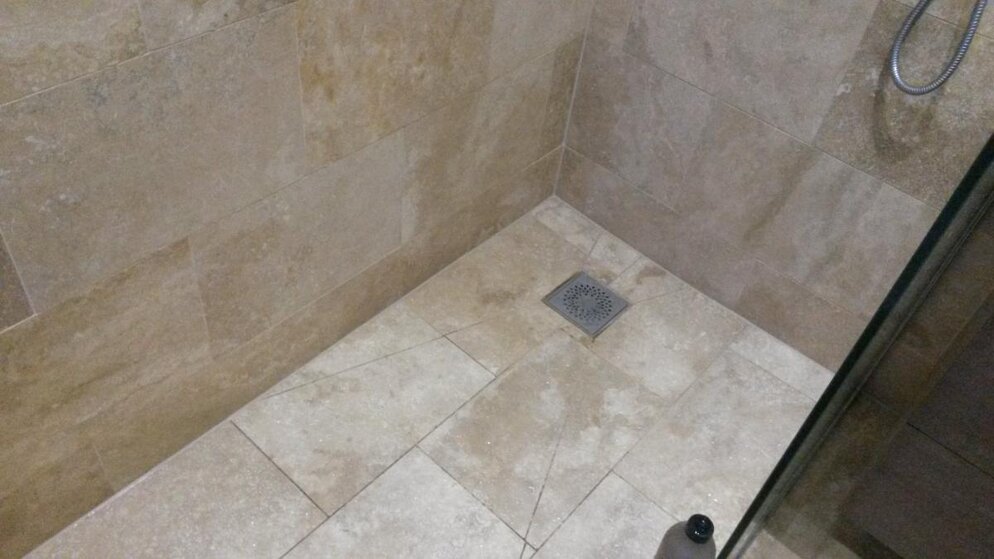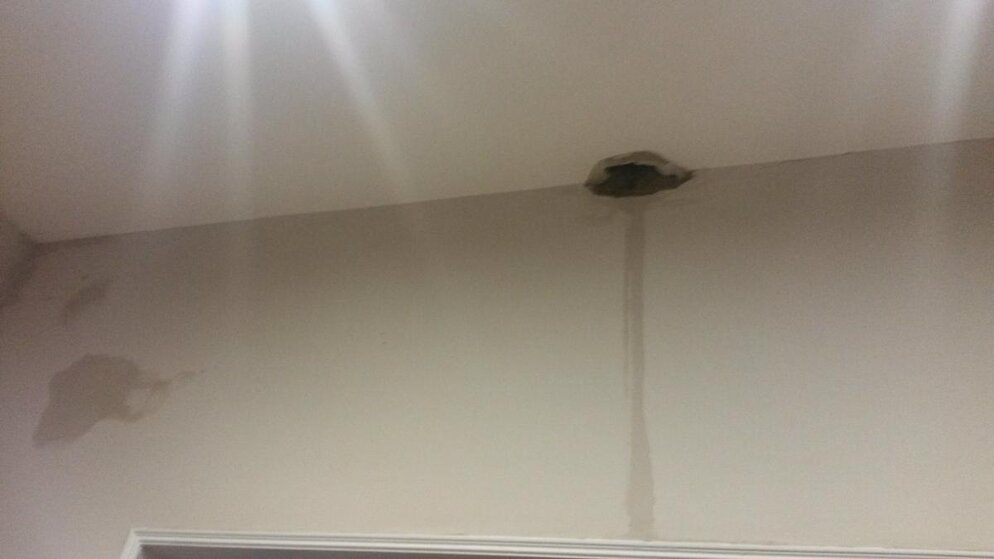S
scotty9a9
Hi, We had a wet floor installed on the first floor and has now begun to show leaks which have been making the wall/ceilling below wet. I have included a few pictures so you can see the wetfloor and leak from below.
Given the sheer pain of ripping out the tiles and refitting the wetfloor membrane and underfloor heating the preference is to find another solution by dealing with the problem from below (i,e ceiling / wall). It looks as if the problem is just linked to the water being splashed beyond the edge of the tanking membrane and its just flowing to the lowest point. I have cut a small hole in the edge of the wall/ceiling to see the problem.
Solutions in my preferred order would be-
1) Install a channel in the ceiling (eg think guttering) to drain the water to an external wall. (about 1 and 1/2 meters). Obviously far from ideal and I am sure a no no in a professionals book.
2) Install glass surround to stop water escaping outside membrane. Kind of makes the wet floor redundant.
3) Refit bathroom tiles and tanking
I look forward to your thoughts on bet course of action or if there may be another solution.
S
Given the sheer pain of ripping out the tiles and refitting the wetfloor membrane and underfloor heating the preference is to find another solution by dealing with the problem from below (i,e ceiling / wall). It looks as if the problem is just linked to the water being splashed beyond the edge of the tanking membrane and its just flowing to the lowest point. I have cut a small hole in the edge of the wall/ceiling to see the problem.
Solutions in my preferred order would be-
1) Install a channel in the ceiling (eg think guttering) to drain the water to an external wall. (about 1 and 1/2 meters). Obviously far from ideal and I am sure a no no in a professionals book.
2) Install glass surround to stop water escaping outside membrane. Kind of makes the wet floor redundant.
3) Refit bathroom tiles and tanking
I look forward to your thoughts on bet course of action or if there may be another solution.
S



